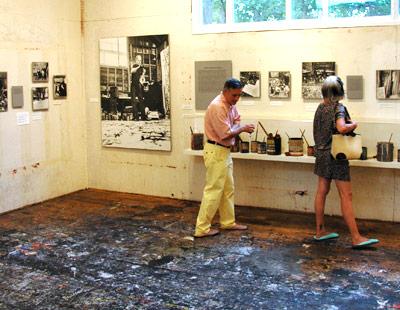Jackson Pollock Takes Japan

Japan has an early start in commemorating next year’s centennial of Jackson Pollock’s birth. Its Aichi Prefectural Museum of Art in Nagoya has opened an exhibit of some 60 of his works.
On loan are works from the Pollock-Krasner House and Study Center in Springs along with a key drip painting, “Mural on Indian Red Ground,” from the Tehran Museum of Contemporary Art in Iran. It was acquired under the shah’s regime in the 1970s and has not been seen outside that country since the revolution. Other works come from Japanese collections and other prominent international lenders. The show will travel to Tokyo in February.
Helen Harrison, the executive director of the center, said last week that the museum had recreated in its galleries Pollock’s studio, complete with its floor. It did so based on photographs and borrowed some paint cans and brushes from the house to lend some verisimilitude. “They really pulled out all the stops,” Ms. Harrison said. The museum also borrowed a broken anchor and some other accessories from the house and studio.
Included in the show are “Birth,” from the Tate Gallery, “Totem Lesson 2,” from the National Gallery of Australia, “Number 7, 1950,” from the Museum of Modern Art, and “Number 7, 1952,” from the Metropolitan Museum of Art.
Ms. Harrison was among the 500 guests who attended the opening on Nov. 10. She is planning a number of events next year, including two summer exhibits, one examining Pollock’s formative years and the other looking at his enduring influence on contemporary artists. The center is also launching a campaign to build an endowment and has a $1 million challenge grant from the Pollock-Krasner Foundation to start the process.
